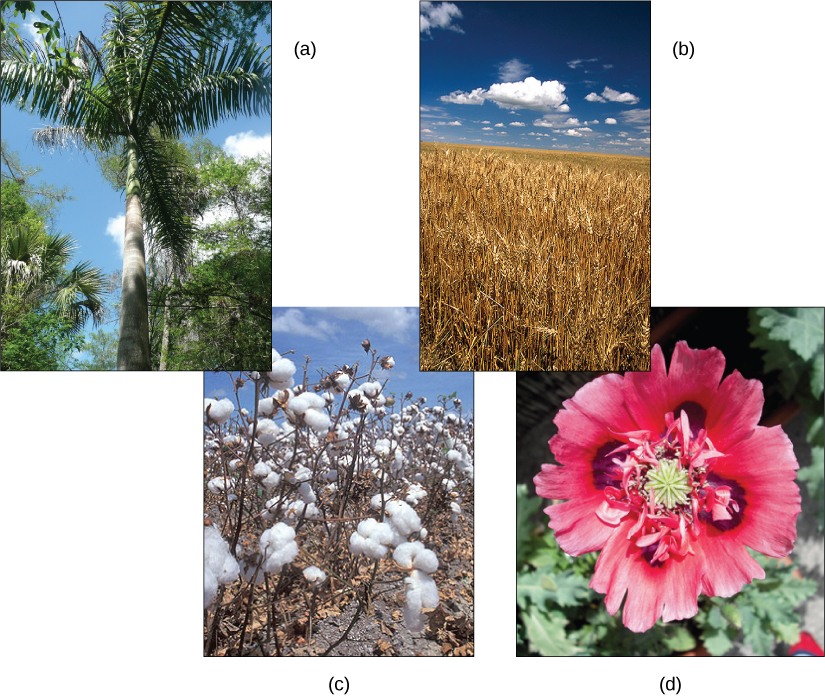| << Chapter < Page | Chapter >> Page > |

Plants play an integral role in all aspects of life on the planet, shaping the physical terrain, influencing the climate, and maintaining life as we know it. For millennia, human societies have depended on plants for nutrition and medicinal compounds, and for many industrial by-products, such as timber, paper, dyes, and textiles. Palms provide materials including rattans, oils, and dates. Wheat is grown to feed both human and animal populations. The cotton boll flower is harvested and its fibers transformed into clothing or pulp for paper. The showy opium poppy is valued both as an ornamental flower and as a source of potent opiate compounds.
Current evolutionary thought holds that all plants are monophyletic: that is, descendants of a single common ancestor. The evolutionary transition from water to land imposed severe constraints on the ancestors of contemporary plants. Plants had to evolve strategies to avoid drying out, to disperse reproductive cells in air, for structural support, and to filter sunlight. While seed plants developed adaptations that allowed them to populate even the most arid habitats on Earth, full independence from water did not happen in all plants, and most seedless plants still require a moist environment.
Plants are a large and varied group of organisms. There are close to 300,000 species of catalogued plants. A.D. Chapman (2009) Numbers of Living Species in Australia and the World . 2nd edition. A Report for the Australian Biological Resources Study. Australian Biodiversity Information Services, Toowoomba, Australia. Available online at http://www.environment.gov.au/biodiversity/abrs/publications/other/species-numbers/2009/04-03-groups-plants.html. Of these, about 260,000 are plants that produce seeds. Mosses, ferns, conifers, and flowering plants are all members of the plant kingdom. The plant kingdom contains mostly photosynthetic organisms; a few parasitic forms have lost the ability to photosynthesize. The process of photosynthesis uses chlorophyll, which is located in organelles called chloroplasts. Plants possess cell walls containing cellulose. Most plants reproduce sexually, but they also have diverse methods of asexual reproduction. Plants exhibit indeterminate growth, meaning they do not have a final body form, but continue to grow body mass until they die.

Notification Switch
Would you like to follow the 'Bi 101 for lbcc ilearn campus' conversation and receive update notifications?